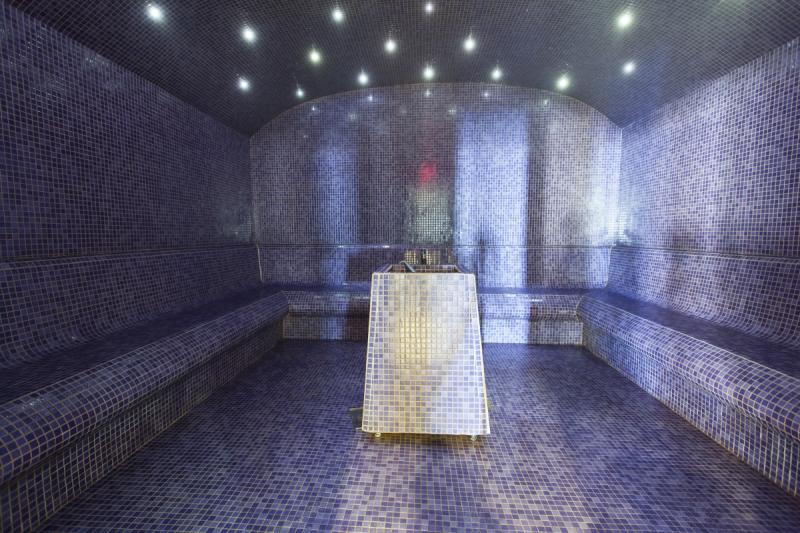
Experience an authentic Turkish bath
First introduced in the late 15th Century, the Turkish hammam has long played a role in Middle Eastern and particularly Turkish history and society. This type of bathing dates back to the Ottoman Empire, serving as a place for social gathering, spiritual and physical cleanliness and also a focal point for some of the greatest designers and architects in Turkish history. Many of the most impressive hammams were created as a way to show the wealth, intellectual prowess and cultural strength of a wealthy citizen or sultan. Really coming into their own from the 16th Century, hammams were open from sunrise to sunset and weren’t just bathing facilities, but also for neighbours and friends to meet and talk, conduct business and reinforce social status.
Most traditional Turkish baths consists of a warm room, a hot room, a room to cool off and relax in comfort and peace. The methods of bathing have changed very little over the centuries, with traditional cotton wraps and wooden shoes still worn and contemporary hammam design consistent with the original constructions. The warm room is heated by a constant flow of hot, dry air, and after raising their body temperature, visitors spend time in the hot room, before entering the steam and massage area. Bathers lie down on central marble slabs and are washed down vigorously with an exfoliating massage glove and soap. After visitors have the soap washed away, they can enter the cool room, to talk with friends and relax. Surprisingly, the modernisation and industrialisation of Turkey has not impacted the use of these old-fashioned bathing institutions, and serve both as powerful sources of cultural identity and also as popular tourist attractions.
Four of the Best Turkish Baths in Istanbul
Cağaloğlu Hamami
Name-checked in Patricia Schultz’s book ‘1,000 Places To See Before You Die: A Traveller’s Life List’,Cağaloğlu Hamamı has a reputation for being one of the best hammams in Turkey. Located in the centre of Istanbul, this awe-inspiring structure holds the honour of being the last traditional bath house constructed before the end of the Ottoman era.
Built in 1741 by order of Sultan Mahmut I as a gift to the city, it was designed by two different architects (Süleyman Ağa began the project, with Abdullah Ağa taking over to finish the project). The building has a wide range of bath services available, including a €30 self-service for anyone who feels uncomfortable about some of the more physical aspect of the massage stage of the ritual.
Its architecture is simply stunning to behold, with an attention to detail that remains a fantastic example of the Ottoman style of design at the time. Its combination of high doomed ceilings, stylish internal marble fountains and two levels of individual changing chambers make it ideal for anyone who wants a stylish edge to their explorations into traditional Turkish culture. The facility also offers a café and holds BBQ parties in its interior garden during the summer. Belly dancers and oriental music can be performed to groups on request.
Beylerbeyi Hamami
For those tourists looking for something closer to the original, authentic experience of a Turkish bath and want to avoid the more Westernised establishments that have sprung up in recent years across the country, Beylerbeyi Hamami will be the place for you.
Situated close to Beylerbeyi pier and right next to the area’s mosque (a typical feature of a lot of Turkish baths), the building was commissioned by Sultan Abdulhamid I in 1778 as a tribute to his mother. The building takes a more subdued stance to its design, but the wooden structure still has recognisable qualities of Ottoman-era architecture. The interior includes a marble fountain between its cooling area and the hot bathroom area, which complements the minimalistic style of the rest of the bath house well.
Taking a more traditional approach to the common practice of gender separation in Turkish hammams, women are only able to visit from the morning until the early afternoon. Male clients can visit from the afternoon onwards. The complex offers private rooms for clients, alongside world-famous customer service and quality massages from their experienced staff. Though the decor isn’t as illustrious as some of the other hammams in Istanbul, the quality of the service on offer for visitors more than compensates.
Süleymaniye Hamami
Süleymaniye Hamami is one of the more popular Turkish baths amongst tourists in Istanbul as it allows visitors to participate in bathing rituals together as a couple rather than separating genders apart.
Constructed as part of the Süleymaniye Kulliye (a district in the city which is centred around the Süleymaniye Mosque) in 1557 by the Ottoman architect Sinan, the hammam has a protected status from Turkish tourism authorities, protecting its legacy and ensuring its future. Sinan was one of the most prolific architects of his time, designing over 450 buildings in his lifetime, nearly 200 of which still stand to this day. Its significance in Turkish culture going even further, as Sultan Suleiman the Magnificent was the establishment’s first customer, bathing there after taking part in its grand opening.
In the present day, it is widely regarded as a friendly environment for travellers to cleanse themselves after a long day of exploring the busy city. The bathing experience will last between 60 and 90 minutes, significantly longer than a typical Turkish bath, meaning that clients will be able to get a more complete experience of this important and enjoyable cultural practice. After drying off, you will be able to sample a range of drinks (though this will be at an extra cost). Family treatments are also available.
Galatasaray Hamami
This spa come with a mythological past, as locals say that Sultan Bayezid II visited the area during a hunting party, and came across famed poet Gul Baba, who presented him with a rose, and requested a building be erected in the location.
Galatasaray Hamami is reputed to be that building, and the colourful, extravagant and opulent spa is a perfect example of Turkish bathing luxury. Visitors will be able to enjoy a Turkish coffee in the spacious central lounge, with a soaring ceiling rising more than three storeys, and beautiful bright tiled floors throughout. Afterwards, visitors can start their bathing experience in the red glowing light of the central sweat room, and then refresh their hot skin with cooling water from marble sinks.
The spa has had a long connection with students of the area, and pupils from Galatasaray Lysee (the oldest high school in Istanbul – built in 1481) used to visit the spa privately every morning, with no other visitors allowed in before the students finished their bathing rituals. No experience here is complete without donning a pair of wooden clog-like shoes known as ‘takunya’ as well as the cotton loincloth known as a ‘pestemal’. Visitors are treated to a rubbing massage with an exfoliating bath glove, before being soothed with soft bubbles.
Cemberlitas Hamami
Dating back to 1584, this spa was built by famed Ottoman architect Sinan. The spa is not as richly decorated as Sinan’s earlier projects, an example of an architect leaving behind the gaudier, decorative projects of their youth, and finding joy in smooth, curving lines and gentle symmetry.
This spa has been used in countless advertising campaigns and photo shoots, as the mellower backdrop makes for the perfect scene, and the spa also continues to attract a steady stream of architects looking for inspiration. Visitors will see historians interested in glimpsing the past, with beautiful marble columns and copper sinks hinting at the traditional and historical legacy to be found here.
An exciting feature of this spa is the central ‘gobektasi’, or central stone, which sits in the middle of the spa, below a hole in the roof. On warm days, this is a fantastic spot to lie down and soak in some Turkish sunshine. Every visitor will use the traditional ‘pestamel’ cotton and silk wrap, to sweat out every last toxin on the central marble platform. Guests will also be able to sample the specially prepared Cemberlitas Hamami soaps, and wash with the restorative waters here. After your treatment or bath relax on the comfortable sofas and try an ayran drink (a mixture of yogurt, mineral water and salt).
Share this article:



















